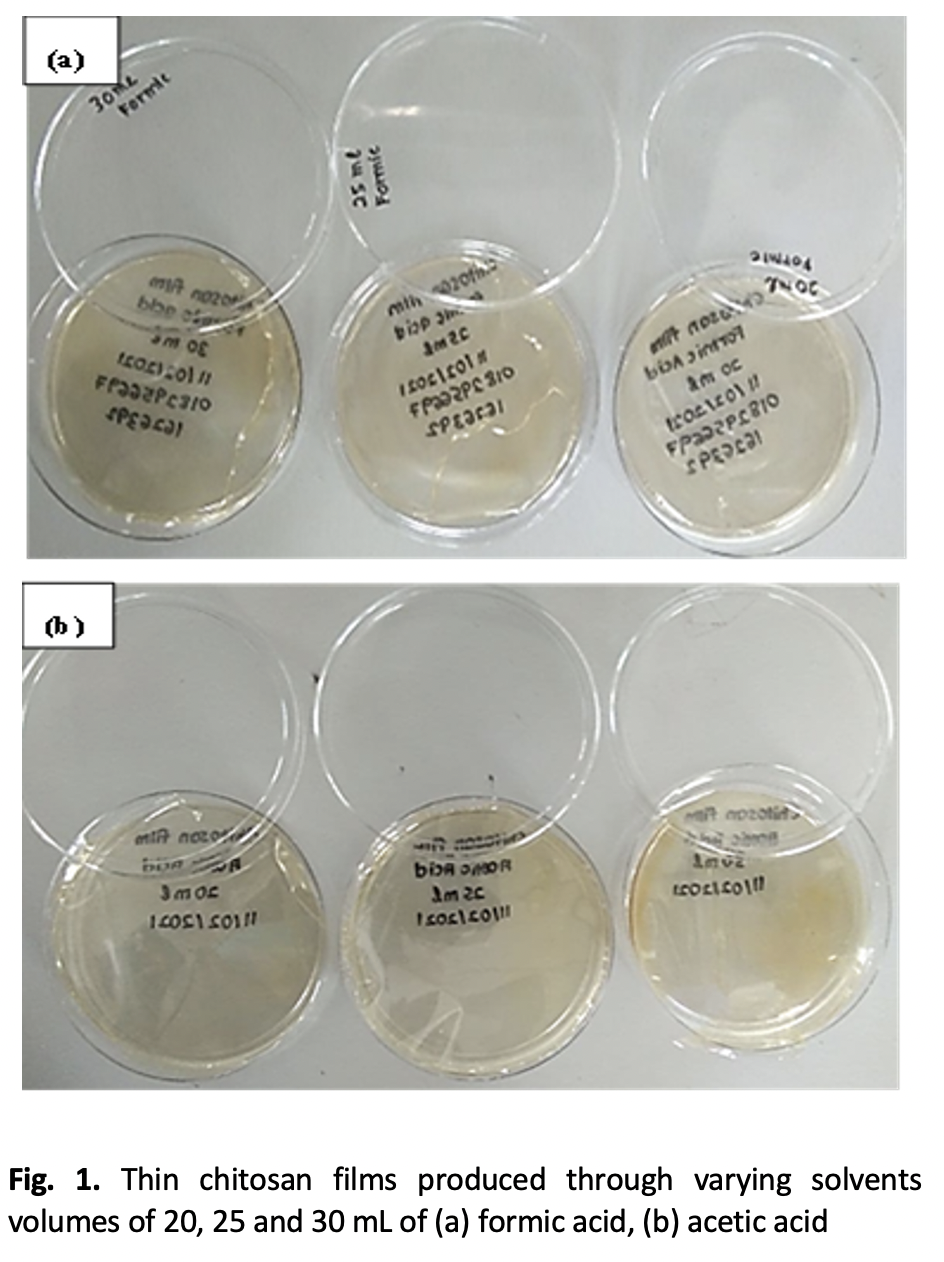Fabrication of Biopolymer-Based Piezoelectric Thin Film From Chitosan Using Solvent Casting Method
DOI:
https://doi.org/10.37934/araset.28.2.8089Keywords:
Biopolymer, chitosan, piezoelectric, thin film, solvent castingAbstract
The application of biopolymer in piezoelectric application provides a great potential to replace traditional piezoelectric substances like polyvinylidene fluoride (PVDF) and lead zirconate titanium (PZT), because of their biodegradability, biocompatibility, low toxicity properties and sustainable production. Chitosan, a natural polysaccharide has been found to fulfil all the characteristics and can be used safely for piezoelectric applications in agricultural, food industries and biomedical fields. This study aims to assess how piezoelectric characteristics are affected by different acid solvents and solvent casting volumes during chitosan thin film production. Chitosan thin film prepared using acetic acid and formic acid were fabricated using solvent casting method on petri dish at different volume of acids solvent. Chitosan thin films produced using acetic acid and 25 mL solvent loading provided the most significant mechanical quality factor (2.8). Moreover, the dissipation factor (0.80) was the lowest, indicating comparability to traditional thin PVDF film piezopolymer. Hence, thin chitosan films produced using acetic acid is proven to have the potential in piezoelectric application.
Downloads

Downloads
Published
2022-10-18
How to Cite
Nadia Syauqi Syahid Mohammed, Maziati Akmal Mat Harttar, & Farah Ahmad. (2022). Fabrication of Biopolymer-Based Piezoelectric Thin Film From Chitosan Using Solvent Casting Method . Journal of Advanced Research in Applied Sciences and Engineering Technology, 28(2), 80–89. https://doi.org/10.37934/araset.28.2.8089
Issue
Section
Articles




























